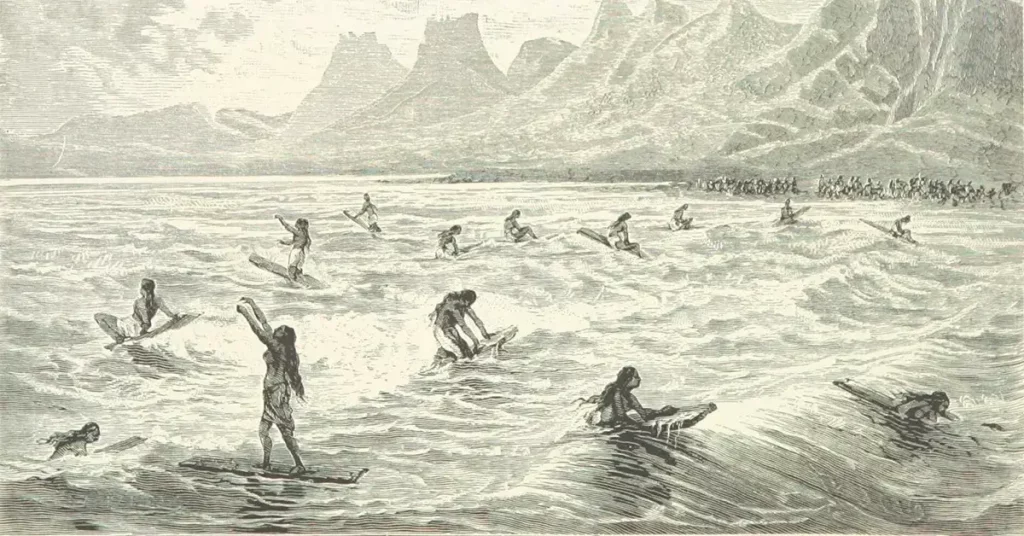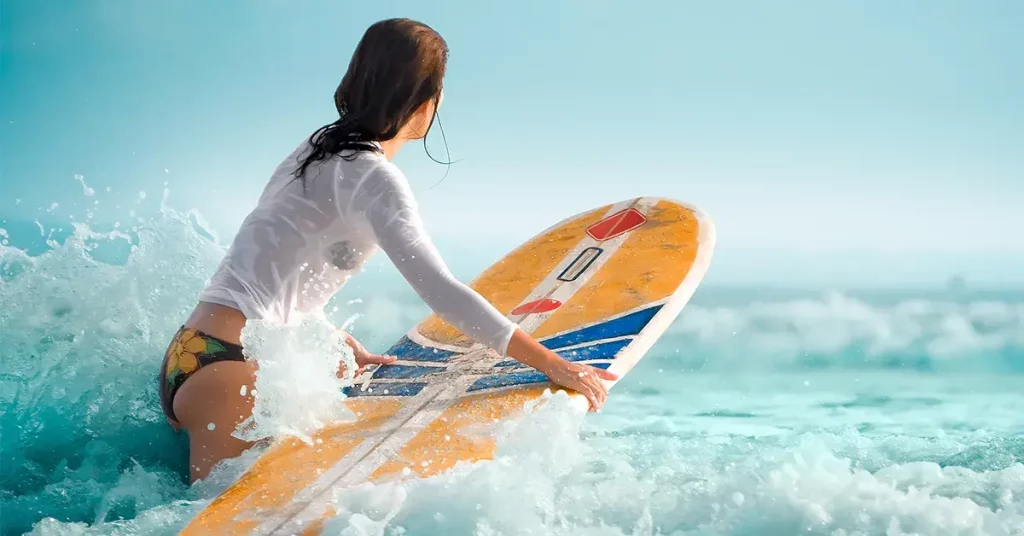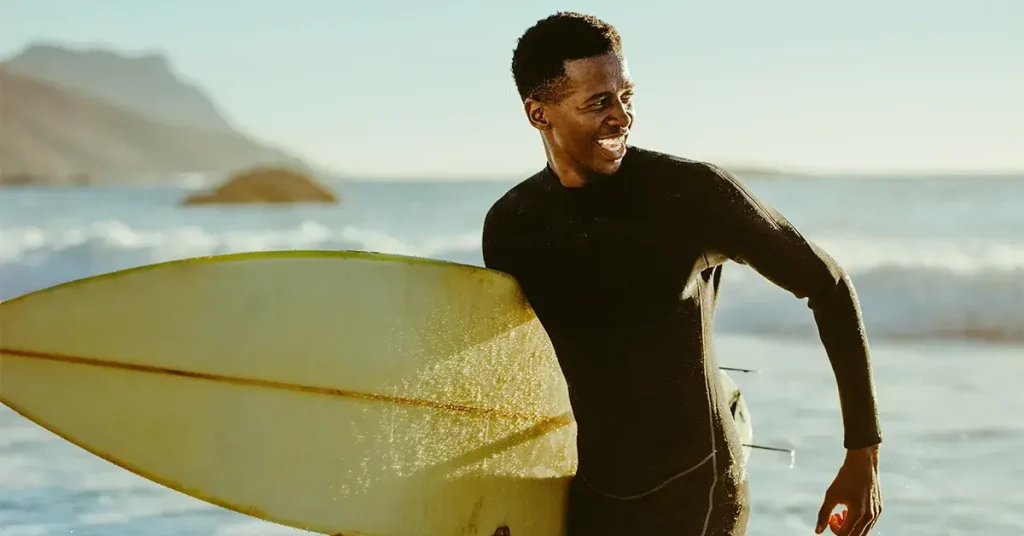No one knows precisely when man began his fascination with riding the waves, but surfing in one form or another is certainly older than recorded history. Most historians agree that surfing on a wooden surfboard originated in western Polynesia thousands of years ago.
The Polynesians spread this practice with them as they moved across the pacific from the Philippine islands to Tahiti, Samoa, and eventually Hawaii. The earliest western account of surfing history was in the late 1700’s, when captain James Cook encountered surfers in Hawaii and Tahiti. He wrote in his journal
“I could not help concluding that this man felt the most supreme pleasure while he was driven on so fast and so smoothly by the sea.”
In Polynesian culture, the chief was typically the best surfer in the community, and would have access to the highest quality surfboard made from the finest wood. The best surfing spots were reserved for the ruling class, while the lower classes had to to surf in less desirable locations. The Polynesians brought these customs with them to Hawaii, where the sport evolved further, and became something new and distinctly Hawaiian.
Early Hawaiian Surfing History
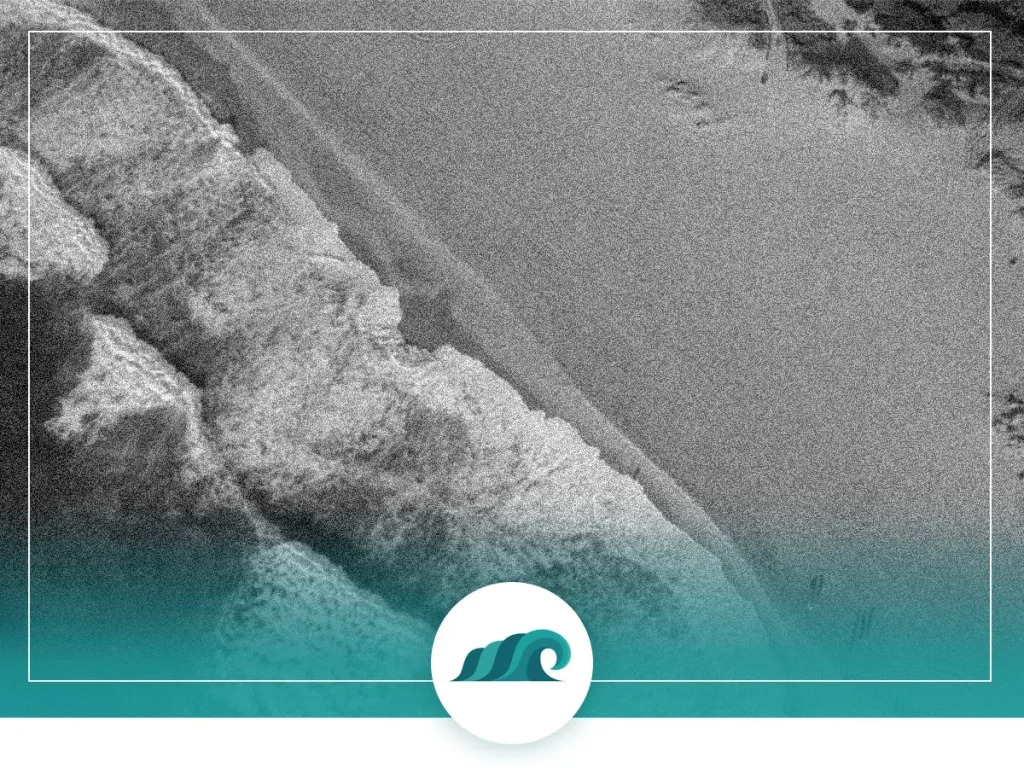
The early Hawaiians regarded surfing with much reverence, and it became a central part of their culture and lifestyle. They called the practice he’e nalu, which translates to ‘wave sliding’ in English. Surfing was a deeply spiritual practice in their society. Priests prayed for good waves, as well as blessing the wood used to manufacture the surfboards.
Chiefs and royalty (called ali’i) would display their skill on the surfboard, and many of Hawaii’s most famous chiefs were legendary for riding big waves. Occasionally, commoners who displayed great skill were invited to surf with the ruling class in their privileged location. The size of boards also depended on social class, with commoners riding boards up to 12 feet long, while the ali’I rode boards up to 24 feet long.
Later Hawaiian Surfing History
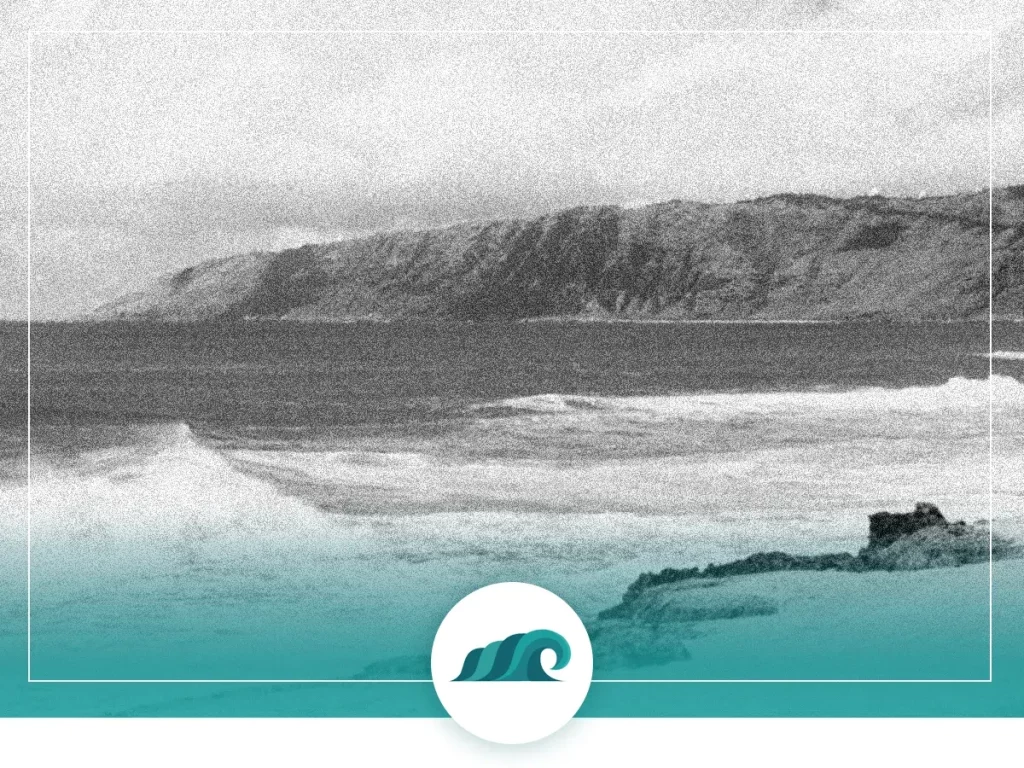
Hawaiian surfing culture suffered a major setback after contact with western civilization in the 18th and 19th century. Along with advancements in technology and farming, westerners brought with them smallpox and other diseases to which the native Hawaiians had no immunity. These diseases decimated the native Hawaiian population, and as a result their former culture and way of life died out. This combined with protestant missionaries preaching against the practice meant that surfing in Hawaii practically died out for almost 150 years.
Like many great things, surfing could not be suppressed forever. Famous American authors Mark Twain and Jack London both tried their hand at surfing after witnessing a few of the remaining Hawaiian surfers ride the waves around Waikiki. This helped to spark a renewed interest in surfing among American tourists as well as locals.
The first man to become famous as a surfer was an Irish-Hawaiian named George Freeth. Freeth surfed in front of astonished crowds in Hawaii and became the first international ambassador for the sport. In 1907 he was invited to put on a surfing demonstration in southern California. This earned him the title ‘The First Man to Surf in California’. At the same time, another surfing pioneer was making a name for himself on the beaches of Hawaii. Duke Kahanamoku – known as the ‘Ambassador of Aloha’ – was an incredible surfer and swimmer who helped spread surfing around the globe. Duke was such a good natural swimmer that he won Olympic gold medals in the 100-meter freestyle and relay race. He also helped spread surfing to Australia and California by giving demonstrations to amazed locals.
Surfboard Development
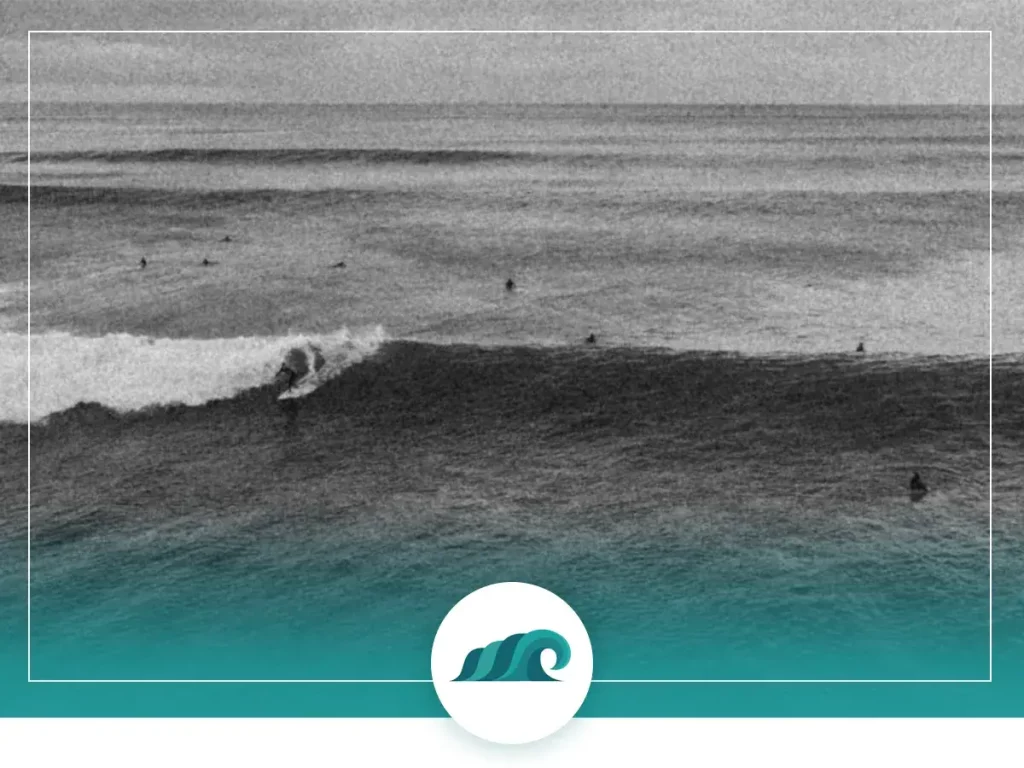
Incredible advances in surfing technology took place rapidly over the 20th century. In the early 20th century, long hardwood boards that weighed up to 175 lbs. were the standard. These boards were difficult to transport and unwieldy out of the water. The surf pioneer and inventor Tom Blake was the first to cut the length and weight of these boards significantly. His design was controversial for the time, but had great success in competition. This opened up the door to all sorts of experimentation with board shape, material and length. Blake also had the idea to add a small fin on the underside of the board for added maneuverability.
World War II brought further advances to surfboard design and surfing culture in general. The polymers, fiberglass, and resin technologies that came out of the war were applied to new surfboard designs. Waterproof resins were used to bond surfboards together and laminated fiberglass used to cover fins. Sailors and marines who spent time in Hawaii and the pacific during the war were exposed to surfing for the first time. Many brought a new enthusiasm for this exotic sport home with them.
Modern Era
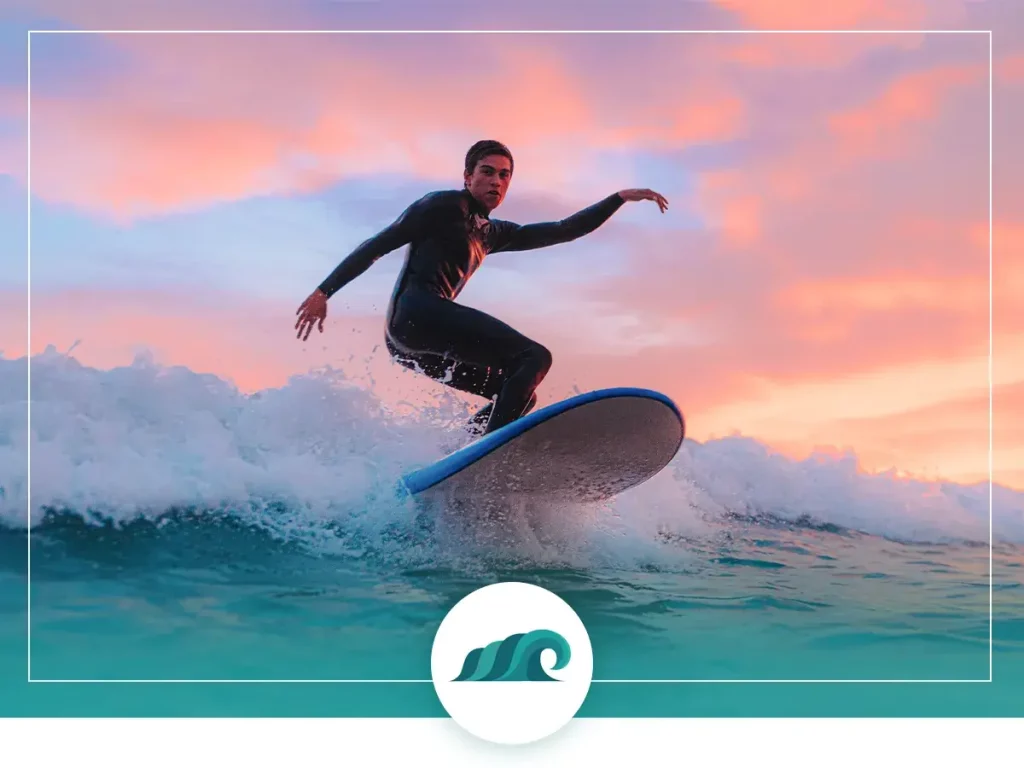
The post-war economic boom in America led to the 1950’s and 60’s becoming the heyday for surfing. Regular people finally had time for leisure activities, and the laid back California culture spread throughout the globe. Add to this the pop culture influence of major Hollywood movies like Gidget (1959) and The Endless Summer (1966). Additionally, hit songs like ‘Surfin’ USA’ and ‘Surfin Safari’ by the Beach Boys dominated the airwaves at the time.
Surfing’s heyday has mostly continued unabated to the present day. The sport has grown tremendously, and can now be found in coastal areas all around the world. Much has changed in the past 50 years though. Professional surfing is now a major sport where top pros command million dollar salaries and endorsement deals. The once spiritual practice is now big business. But the soul of surfing still exists. The spirit of the early Polynesian wave sliders lives on, as surfers everywhere relish the simple joy of catching a wave and riding it as far as they can.

